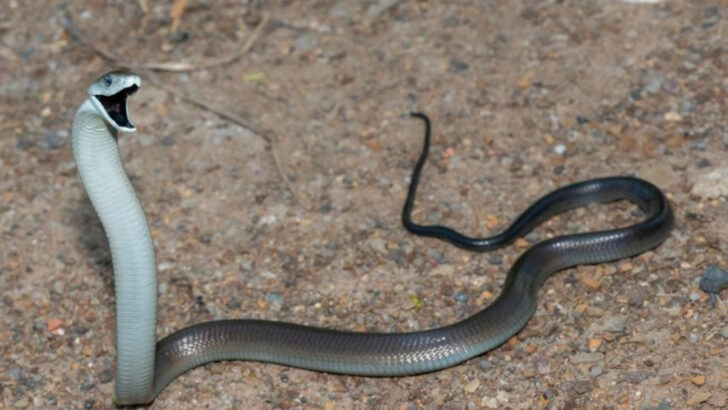Some snakes give you a warning. Others just go for the bite.
In the world of reptiles, not all danger slithers in silence. While some snakes rattle, hiss, coil, or flare up in a dramatic display, others stay ice-cold and quiet — right up until the moment they strike.
Whether you’re hiking, herping, or just living somewhere they like to roam, knowing which ones give a heads-up and which skip the courtesy can mean the difference between a close call and a very bad day.
This list breaks down 12 snakes that let you know you’re too close — and 8 that don’t bother with the warning shot. Learn their signals, respect their space, and keep your ankles bite-free.
Eastern Diamondback Rattlesnake
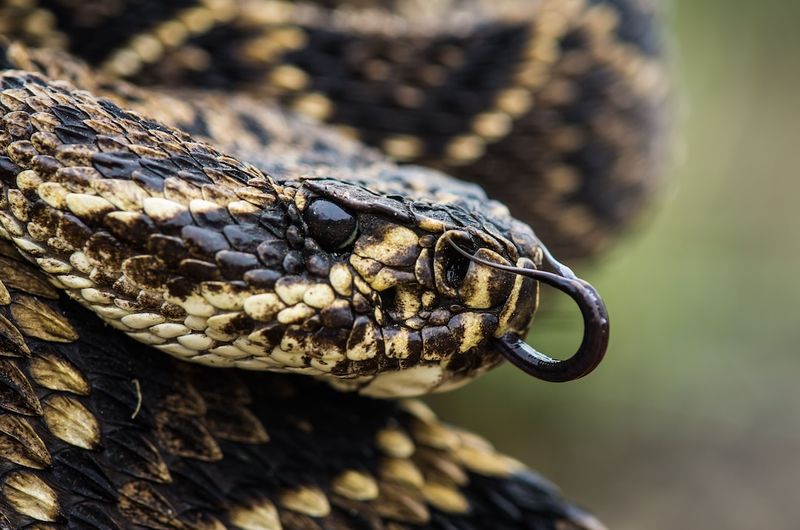
The Eastern Diamondback Rattlesnake is notorious for its intimidating rattle. This sound is a clear warning to potential threats, signaling the snake’s readiness to defend itself. Found in the southeastern United States, this species prefers dry, sandy areas.
Its beautifully patterned skin serves as a warning and camouflage. When threatened, it coils and shakes its rattle to deter predators.
Did you know? This rattlesnake can deliver a significant amount of venom with a single bite, making its warning rattle essential for survival and interaction with humans and other animals.
Western Diamondback Rattlesnake
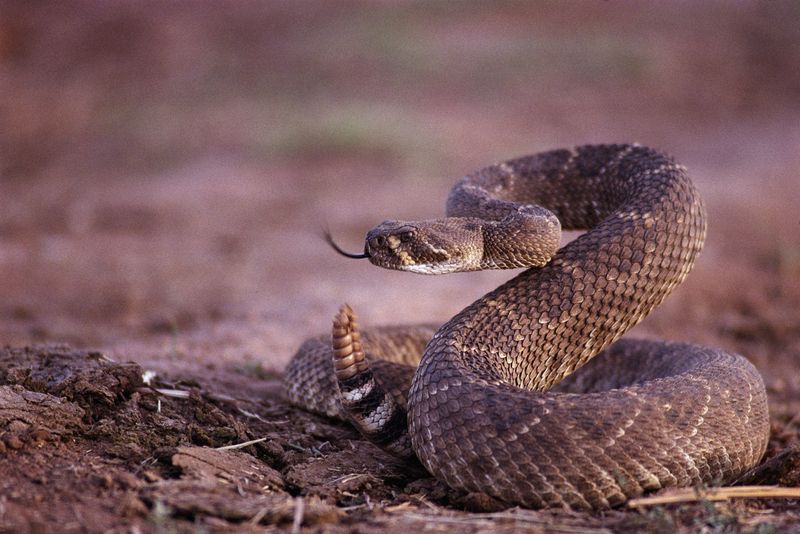
The Western Diamondback Rattlesnake is another species that warns before striking. Its rattle, a distinctive feature, serves as an alarm to those who venture too close.
This snake is commonly found in the arid regions of the southwestern United States and Mexico. Its ability to blend with desert landscapes is remarkable.
With its warning rattle, the Western Diamondback hopes to avoid unnecessary conflict. It’s not just a defensive mechanism but a survival strategy, helping it coexist with larger animals and humans in its habitat.
Timber Rattlesnake

Amidst the dense woodlands of the eastern United States, the Timber Rattlesnake makes its home. Known for its powerful rattle, this snake issues a stark warning to intruders.
Its habitat ranges from rugged mountains to lowland forests, and its adaptability is impressive. When threatened, it relies on its rattle to communicate danger to potential threats.
Fun fact: The Timber Rattlesnake’s rattle is made of keratin, the same material as human fingernails, and grows with each molting cycle, adding segments as it ages.
Mojave Rattlesnake
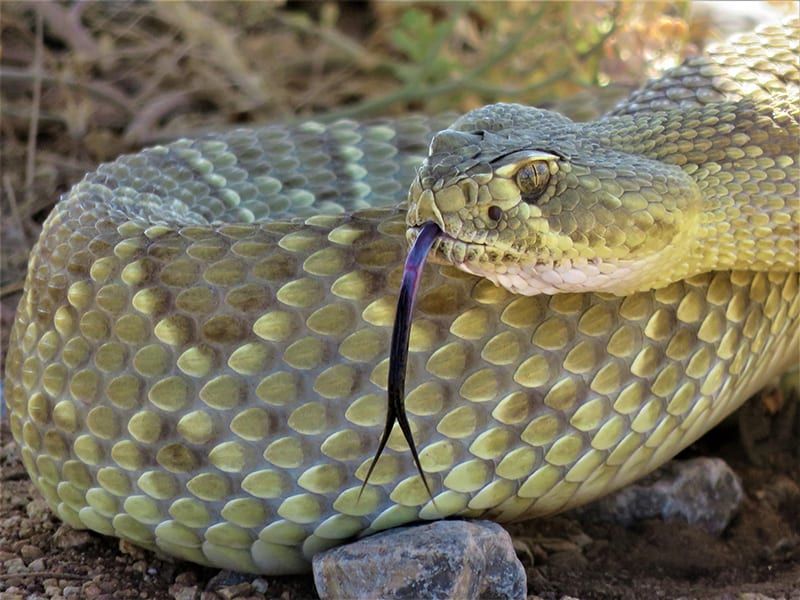
In the sun-scorched deserts of the American Southwest, the Mojave Rattlesnake sends a clear signal to intruders with its distinct rattle. Its potent venom makes its warning even more critical.
This snake’s warning is not just auditory; its striking greenish hue blends with the desert, providing visual hints of its presence.
The Mojave is known for its aggressive nature, but its rattle serves as a peace offering, hoping to avoid confrontation. Despite its reputation, it prefers to warn rather than strike unprovoked.
Sidewinder Rattlesnake
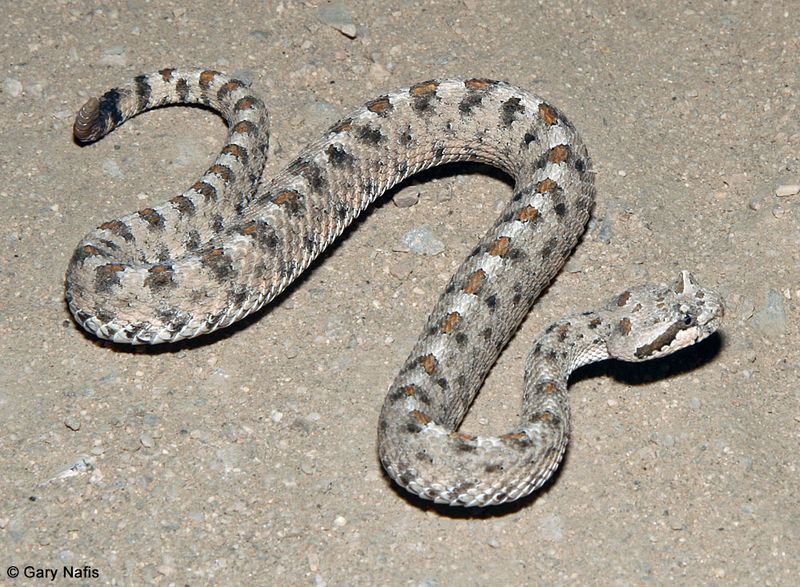
The Sidewinder Rattlesnake, with its unique sideways motion, is an iconic inhabitant of North America’s deserts. Its rattle is an essential component of its defense strategy.
This snake’s distinctive movement allows it to traverse hot sand efficiently, leaving characteristic J-shaped tracks. Its rattle warns potential threats, issuing a notice to back away.
Did you know? The Sidewinder’s eyes are positioned on top of its head, allowing it to bury into the sand and still keep watch for both prey and predators alike.
Northern Pacific Rattlesnake
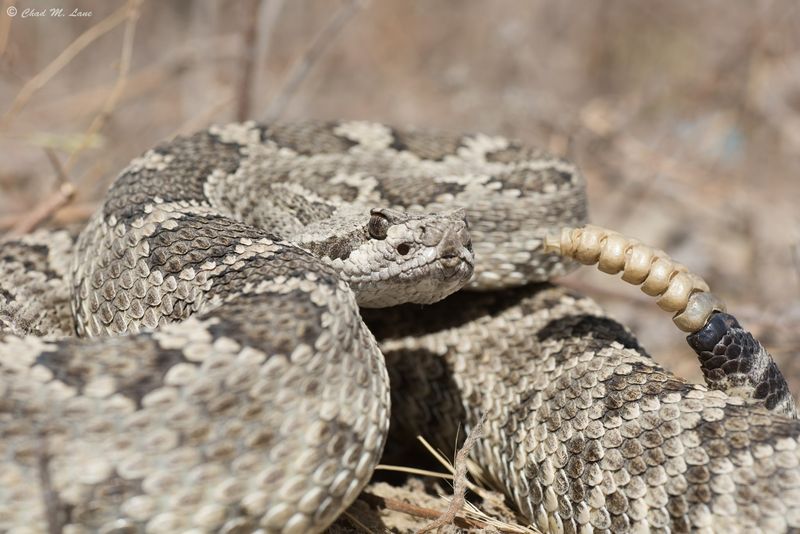
Venture into the forests and grasslands of the Pacific Northwest, and you might encounter the Northern Pacific Rattlesnake. Its warning rattle is a hallmark of its defensive tactics.
The snake’s muted colors allow it to blend seamlessly into its surroundings, but its rattle cuts through the silence, alerting others to its presence.
This species prefers solitude but communicates assertively when disturbed. Its rattle isn’t just a sound; it’s a language of survival, emphasizing coexistence without confrontation.
Arizona Black Rattlesnake

The Arizona Black Rattlesnake, with its deep, dark hues, stands out against the arid landscapes of its habitat. Its rattle is both a warning and a tool for communication.
Often found in the mountainous regions of Arizona, this snake’s coloration aids in camouflage against rocky terrains. When threatened, its rattle is a clear signal to retreat.
Interesting tidbit: The Arizona Black Rattlesnake is known for its social behavior, often found in groups, which is atypical for rattlesnakes, making its warning rattle even more fascinating.
Eastern Indigo Snake
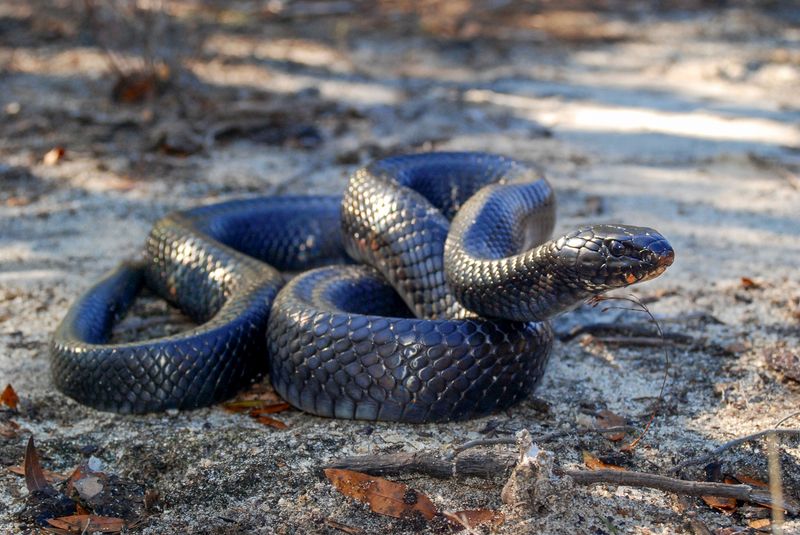
Elegance meets caution in the Eastern Indigo Snake, a fascinating reptile that captivates with both its beauty and behavior. Known for its glossy, black scales with subtle hints of blue, this snake boasts a demeanor as mesmerizing as its appearance.
Unlike its more aggressive counterparts, the Eastern Indigo usually signals its presence by flattening its body or hissing, a subtle warning to those who dare approach too closely. This behavior makes it one of the more predictable members of the snake world.
Did you know? The Eastern Indigo Snake is the longest native snake to North America, with females reaching up to 6.5 feet. Truly, a magnificent creature that balances beauty with caution.
Massasauga Rattlesnake

The Massasauga Rattlesnake, a resident of marshes and prairies in North America, offers a quieter warning. Its rattle is softer but serves the same purpose as its louder relatives.
This snake’s subtle, earth-toned colors blend with its environment, allowing it to remain hidden when not threatened. Its rattle is a gentle reminder of its presence.
Despite its size, the Massasauga’s venom is potent, making its warning rattle a vital aspect of its defensive repertoire, offering both aural and visual cues to potential threats.
Dusky Pygmy Rattlesnake
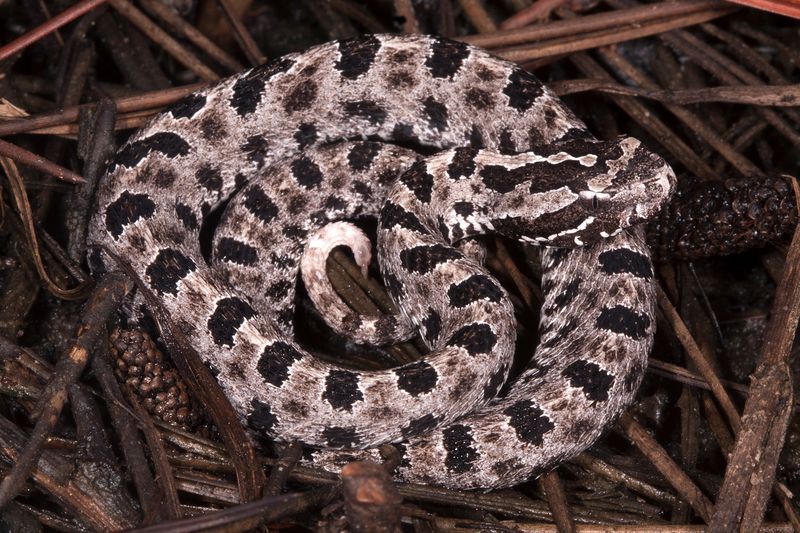
Small yet significant, the Dusky Pygmy Rattlesnake roams the southeastern United States. Its diminutive rattle might be easy to miss, but it’s a key element of its defense.
This snake’s habitat includes forests and wetlands, where it uses its camouflage to blend seamlessly. The rattle warns larger animals of its presence.
Though tiny, the Dusky Pygmy is no less formidable, relying on its quick reflexes and potent venom to survive. It reminds us that size doesn’t dictate the potency of nature’s wonders.
Cottonmouth (Water Moccasin)
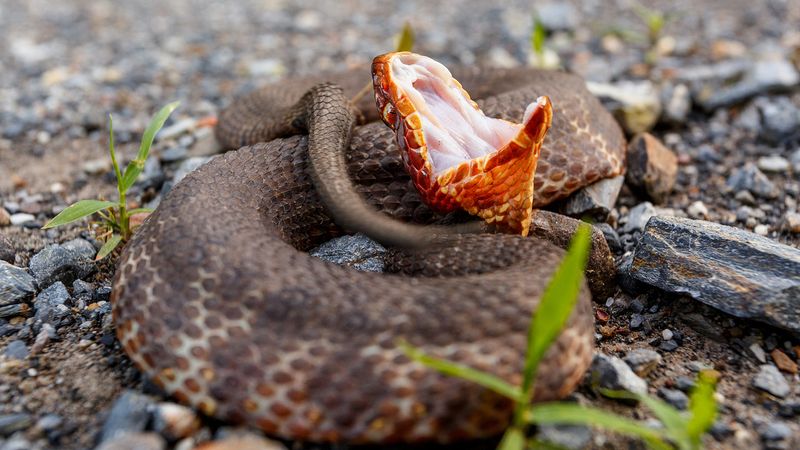
The Cottonmouth, or Water Moccasin, is infamous for its aggressive behavior and ominous warning signals. Found in the southeastern United States, it prefers swamps and marshes.
This snake’s most notable warning is its dramatic open-mouth display, revealing the white lining inside as a stark caution.
Fun fact: Despite its reputation, the Cottonmouth often chooses to flee rather than fight, using its warning display as a deterrent rather than a prelude to attack.
Black Mamba
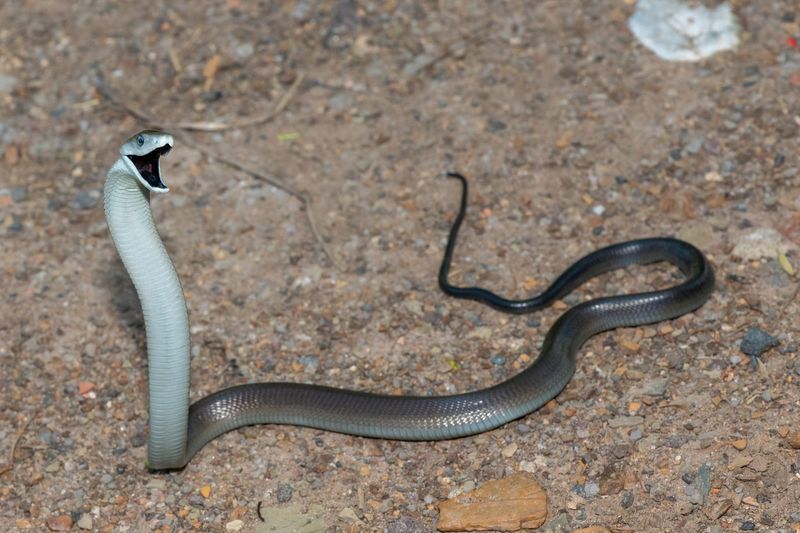
In the heart of Africa, the Black Mamba reigns as one of the most feared snakes. Known for its speed and potent venom, it often warns with a raised head before striking.
The snake’s name derives from the inky blackness inside its mouth, shown during its threat display. It’s a visual warning that few would dare to ignore.
Intriguingly, the Black Mamba’s aggression and speed are balanced by its initial choice to warn rather than attack, a testament to its survival instincts.
King Cobra
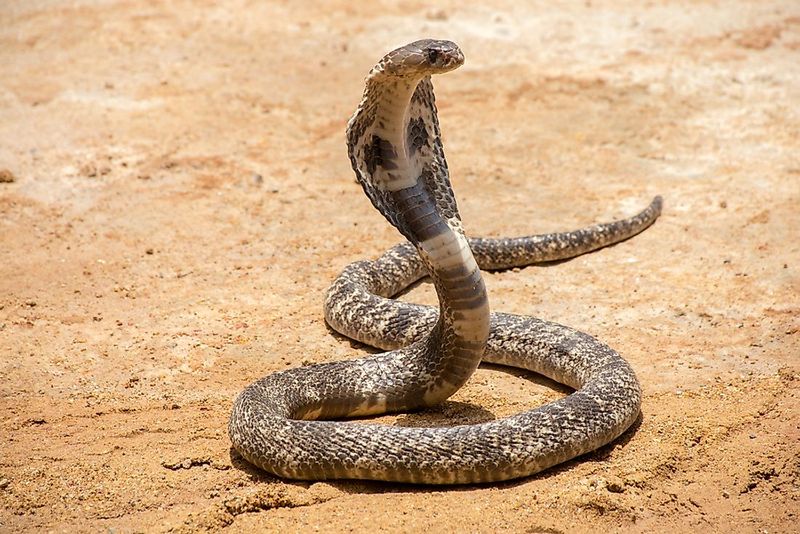
Revered and feared, the King Cobra holds court in the forests of Southeast Asia. Its iconic hood is not just for show; it’s a clear warning to all.
When threatened, the King Cobra raises its body and spreads its hood to appear larger and more intimidating. This visual display is a masterclass in reptilian threat communication.
Did you know? The King Cobra’s venom is potent enough to kill an elephant, underscoring the importance of its warning display. It prefers to save its venom for hunting rather than defense.
Eastern Coral Snake
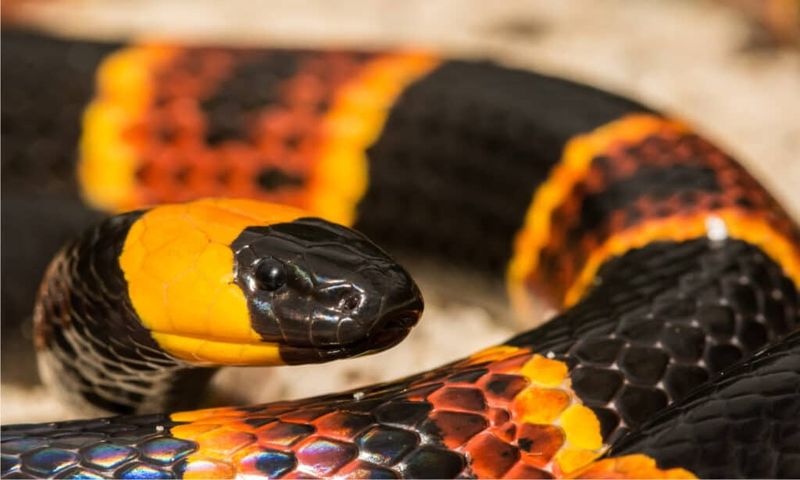
“Red touches yellow, kill a fellow”—the rhyme refers to the Eastern Coral Snake, whose vivid bands are a warning to predators. This snake inhabits woodlands and gardens in the southeastern United States.
The Eastern Coral Snake’s striking colors serve as a visual deterrent, an evolutionary tactic that signals its potential danger.
Though shy and reclusive, its potent venom reinforces its warning, making it a creature of respect and caution in its natural habitat.
Bushmaster
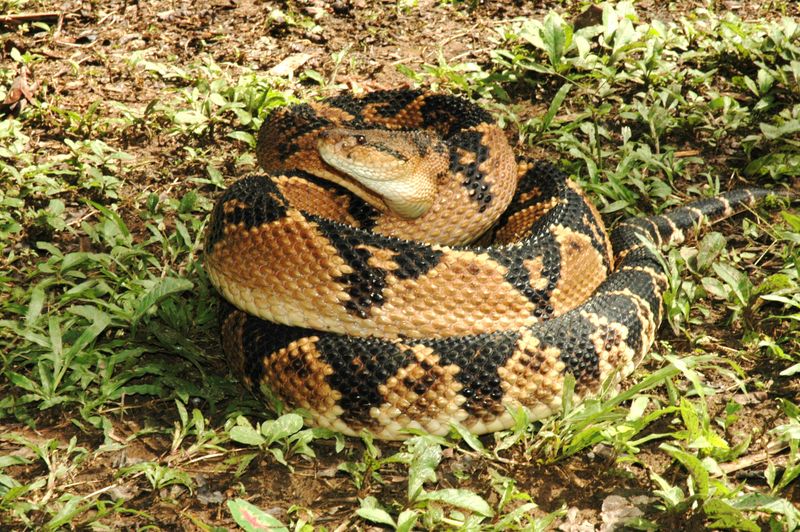
The Bushmaster, a titan among snakes, roams the rainforests of Central and South America. Its presence is commanding, with a striking display to warn predators.
This snake’s impressive size and ability to vibrate its tail against leaves create a sound analogous to a rattle. It’s a clear message to back off.
Despite its formidable reputation, the Bushmaster prefers solitude and does not seek conflict. Its warning display is a testament to its survival strategy in the dense jungle.
Gaboon Viper

The Gaboon Viper, with its cryptic pattern, is a master of ambush. Found in the rainforests of Africa, it relies on stealth over warnings.
This snake’s intricate scales mimic dead leaves, offering perfect camouflage. Unlike rattlesnakes, it lacks a warning rattle, relying on patience to capture prey.
Did you know? The Gaboon Viper has the longest fangs of any snake, delivering a massive dose of venom, making its stealth approach both effective and deadly.
Boomslang
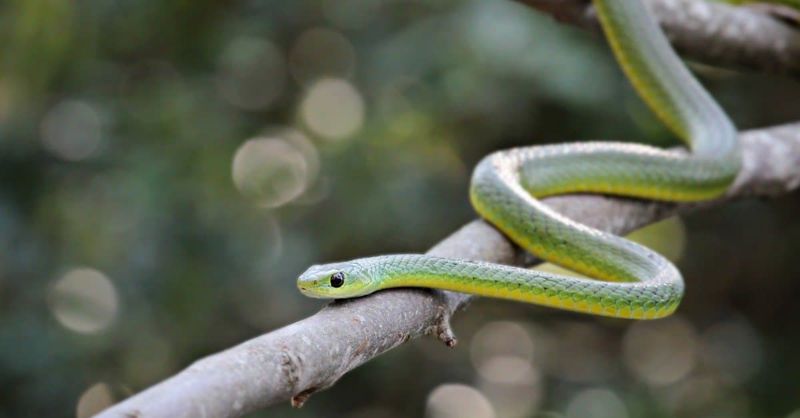
The Boomslang, with its vivid green scales, is a tree-dwelling snake of sub-Saharan Africa. Known for its potent venom, it often strikes without prior warning.
This snake’s arboreal lifestyle and excellent vision make it a formidable predator. Its bite, though rare, is highly dangerous due to its hemotoxic venom.
Despite its lethal reputation, the Boomslang is typically shy, often retreating than engaging, but when threatened, it defends itself with swift precision, underscoring the unpredictability of nature.
Copperhead Snake
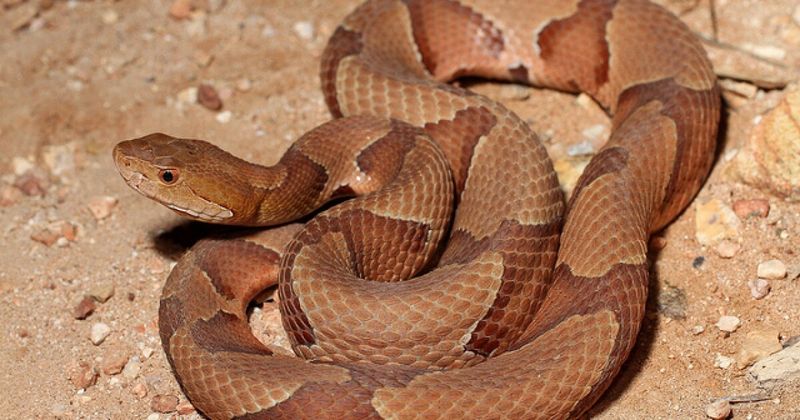
Among the fallen leaves and forest floors, the Copperhead Snake blends seamlessly with its surroundings. Its coppery, banded pattern offers a natural camouflage, making it a master of stealth.
This snake often relies on its cryptic appearance to avoid confrontation, but when provoked, the Copperhead emits a faint musk as a warning. This subtle gesture is usually followed by a defensive posture, a silent yet clear signal to retreat.
Intriguingly, despite its reputation, the Copperhead rarely strikes without provocation. This snake exemplifies the art of restraint, relying on its environment to communicate and deter.
Inland Taipan

The Inland Taipan, often dubbed the “Fierce Snake,” is renowned for having the most toxic venom of any snake. Found in Australia’s arid regions, its strike comes without forewarning.
This snake’s efficient hunting technique includes rapid, multiple strikes, ensuring its prey’s swift demise. Its camouflage is superb, blending with the desert sands.
Though highly venomous, the Inland Taipan is reclusive, avoiding human contact. Its sudden, unannounced strike highlights the primal survival instincts that govern the natural world.
Fer-de-Lance
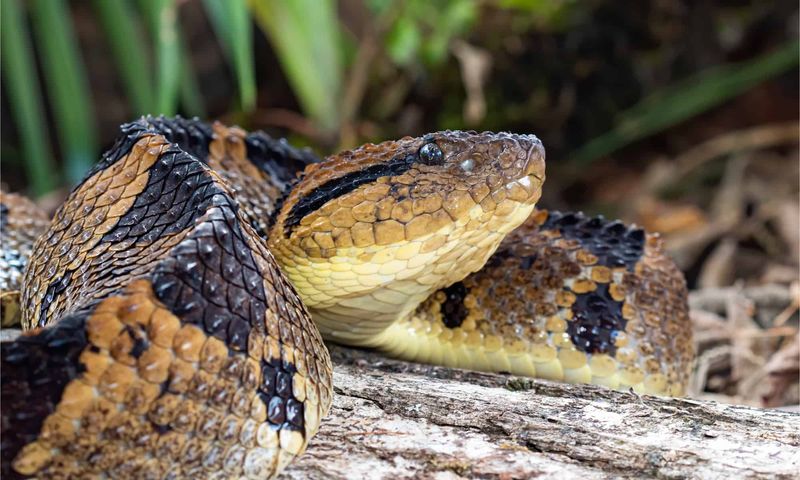
The Fer-de-Lance, lurking in the tropical jungles of Central and South America, is notorious for its unpredictable behavior. It attacks without warning, adding to its fearsome reputation.
This pit viper’s triangular head and cryptic coloration make it both menacing and stealthy. Its venom is hemotoxic, causing severe damage to tissues.
Despite its aggressive demeanor, the Fer-de-Lance is an integral part of its ecosystem, maintaining balance in the dense jungle environment. Its swift, unpredicted attacks reflect the wild complexity of its habitat.

